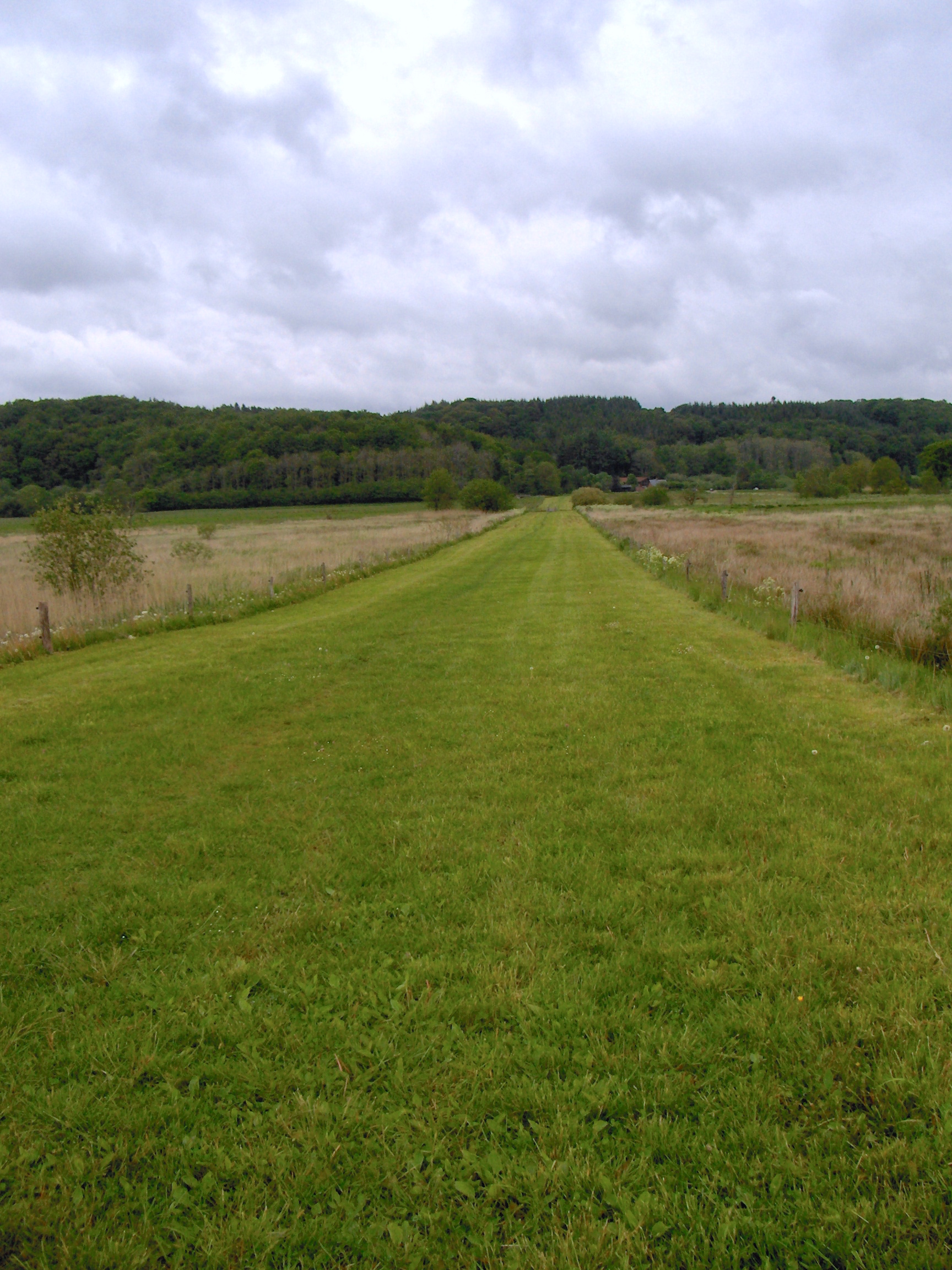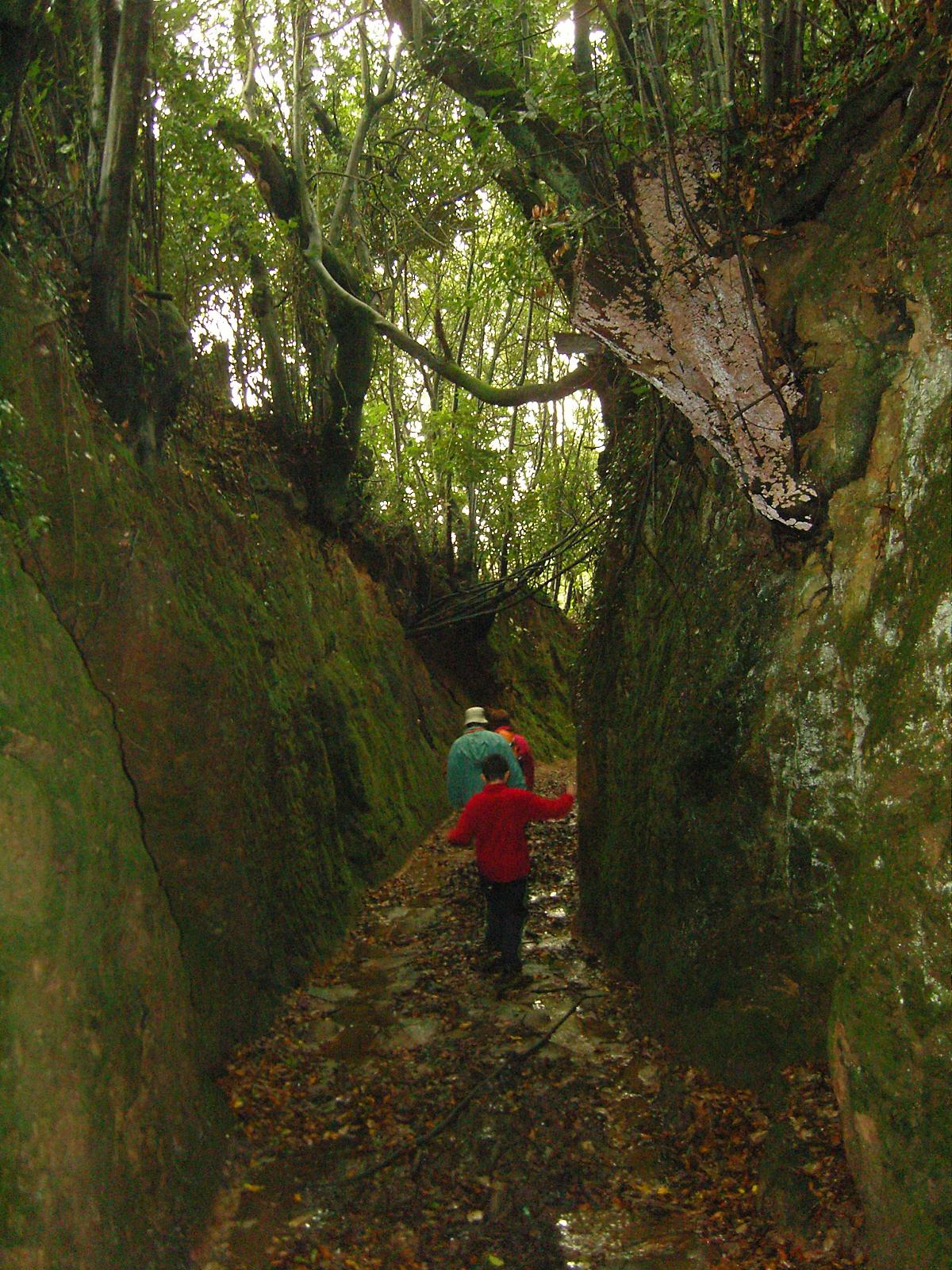|
Ravning Bridge
The Ravning Bridge (Danish: ''Ravningbroen'') was a former 760 m long timber bridge, built in Denmark in the 10th century during the Viking Age. Located 10 km south of Jelling near the village of Ravning, it crossed the meadows of Ravning Enge at Vejle River. Until the Little Belt Bridge was constructed in 1935, it was the longest bridge in Denmark. Discovery and dating In 1953, big shaped oak timber was found near Ravning at the south side of the Vejle River Valley. An amateur archaeologist, K.V. Christensen, heard about the findings, and measured the timber. Later more timber was found where ponds for fish farming were constructed, this time at the north side of the valley. K.V. Christensen concluded that the timber probably was from a bridge and wrote an article about that in 1959. Later the mire in the river valley sank as the result of drainage and regulation of Vejle River, and the top of some of the bridge posts came over the ground surface. Now the National Museum ... [...More Info...] [...Related Items...] OR: [Wikipedia] [Google] [Baidu] |
Vejle River Valley
Vejle River ( da, Vejle Å, also called Sønderåen, "South River") is an approximately river in Vejle Municipality in Denmark. Its source is Engelsholm Lake near the village of Nørup. It first runs south to converge with the Egtved River near the village of Egtved, then flows northeast for through the Vejle River Valley ( da, Vejle Ådal) until it reaches the city of Vejle. There, the river meets the Grejs River and then empties into Vejle Fjord. Vejle River Valley and Vejle Fjord together form the longest tunnel valley in eastern Jutland. The lower river has an urban character where it runs through downtown Vejle, while the upper river is rural and is used for fishing and recreation. Geology Vejle River Valley forms a continuous geological feature with Vejle Fjord, and together the valley and fjord make up the longest tunnel valley in eastern Jutland, with a length of about and a width of up to . The shape of the current valley was formed during the last glacial period, ... [...More Info...] [...Related Items...] OR: [Wikipedia] [Google] [Baidu] |
Harald Bluetooth
Harald "Bluetooth" Gormsson ( non, Haraldr Blátǫnn Gormsson; da, Harald Blåtand Gormsen, died c. 985/86) was a king of Denmark and Norway. He was the son of King Gorm the Old and of Thyra Dannebod. Harald ruled as king of Denmark from c. 958 – c. 986. Harald introduced Christianity to Denmark and consolidated his rule over most of Jutland and Zealand. Harald's rule as king of Norway following the assassination of King Harald Greycloak of Norway was more tenuous, most likely lasting for no more than a few years in the 970s. Some sources say his son Sweyn Forkbeard forcibly deposed him from his Danish throne before his death. Name Harald's name is written as runic ''haraltr : kunukʀ'' (ᚼᛅᚱᛅᛚᛏᚱ ᛬ ᚴᚢᚾᚢᚴᛦ) in the Jelling stone inscription. In normalized Old Norse, this would correspond to ''Haraldr konungr'', i.e. "Harald king". The Latinized name as given in the medieval Danish chronicles is ''Haraldus Gormonis filius'' (Harald, Gorm's son). T ... [...More Info...] [...Related Items...] OR: [Wikipedia] [Google] [Baidu] |
Nordic Iron Age
Iron Age Scandinavia (or Nordic Iron Age) was the Iron Age, as it unfolded in Scandinavia. Beginnings The 6th and 5th centuries BC were a tipping point for exports and imports on the European continent. The ever-increasing conflicts and wars between the central European Celtic tribes and the Mediterranean cultures destabilized old major trade routes and networks between Scandinavia and the Mediterranean, eventually breaking them down. Archaeology attests a rapid and deep change in the Scandinavian culture and way of life due to various reasons which have not yet been sufficiently analyzed. Agricultural production became more intensified, organized around larger settlements and with a much more labour-intensive production. Slaves were introduced and deployed, something uncommon in the Nordic Bronze Age. The rising power, wealth and organization of the central European tribes in the following centuries did not seem to instigate an increased trade and contact between Scandinavia ... [...More Info...] [...Related Items...] OR: [Wikipedia] [Google] [Baidu] |
Dendrochronology
Dendrochronology (or tree-ring dating) is the scientific method of dating tree rings (also called growth rings) to the exact year they were formed. As well as dating them, this can give data for dendroclimatology, the study of climate and atmospheric conditions during different periods in history from wood. Dendrochronology derives from Ancient Greek (), meaning "tree", (), meaning "time", and (), "the study of". Dendrochronology is useful for determining the precise age of samples, especially those that are too recent for radiocarbon dating, which always produces a range rather than an exact date. However, for a precise date of the death of the tree a full sample to the edge is needed, which most trimmed timber will not provide. It also gives data on the timing of events and rates of change in the environment (most prominently climate) and also in wood found in archaeology or works of art and architecture, such as old panel paintings. It is also used as a check in radiocar ... [...More Info...] [...Related Items...] OR: [Wikipedia] [Google] [Baidu] |
Hollow Way
A sunken lane (also hollow way or holloway) is a road or track that is significantly lower than the land on either side, not formed by the (recent) engineering of a road cutting but possibly of much greater age. Various mechanisms have been proposed for how holloways may have been formed, including erosion by water or traffic; the digging of embankments to assist with the herding of livestock; and the digging of double banks to mark the boundaries of estates. All of these mechanisms could apply in different cases. Means of formation A variety of theories have been proposed for the origins of holloways. Different mechanisms may well apply in different cases. Erosion Some sunken lanes are created incrementally by erosion, by water and traffic. Some are very ancient with evidence of Roman or Iron Age origins, but others such as the Deep Hill Ruts in the old Oregon Trail at Guernsey, Wyoming developed in the space of a decade or two. Where ancient trackways have lapsed from us ... [...More Info...] [...Related Items...] OR: [Wikipedia] [Google] [Baidu] |
Nationalmuseet
The National Museum of Denmark (Nationalmuseet) in Copenhagen is Denmark's largest museum of cultural history, comprising the histories of Danish and foreign cultures, alike. The museum's main building is located a short distance from Strøget at the center of Copenhagen. It contains exhibits from around the world, from Greenland to South America. Additionally, the museum sponsors SILA - The Greenland Research Center at the National Museum of Denmark to further archaeological and anthropological research in Greenland. The museum has a number of national commitments, particularly within the following key areas: archaeology, ethnology, numismatics, ethnography, natural science, conservation, communication, building antiquarian activities in connection with the churches of Denmark, as well as the handling of the Danefæ (the National Treasures). Exhibitions The museum covers 14,000 years of Danish history, from the reindeer-hunters of the Ice Age, Vikings, and works of religious ... [...More Info...] [...Related Items...] OR: [Wikipedia] [Google] [Baidu] |
Carbon-14 Dating
Radiocarbon dating (also referred to as carbon dating or carbon-14 dating) is a method for determining the age of an object containing organic material by using the properties of radiocarbon, a radioactive isotope of carbon. The method was developed in the late 1940s at the University of Chicago by Willard Libby. It is based on the fact that radiocarbon () is constantly being created in the Earth's atmosphere by the interaction of cosmic rays with atmospheric nitrogen. The resulting combines with atmospheric oxygen to form radioactive carbon dioxide, which is incorporated into plants by photosynthesis; animals then acquire by eating the plants. When the animal or plant dies, it stops exchanging carbon with its environment, and thereafter the amount of it contains begins to decrease as the undergoes radioactive decay. Measuring the amount of in a sample from a dead plant or animal, such as a piece of wood or a fragment of bone, provides information that can be used to calcu ... [...More Info...] [...Related Items...] OR: [Wikipedia] [Google] [Baidu] |
Jellinge
Jelling is a railway town in Denmark with a population of 3,658 (1 January 2022), located in Jelling Parish, approximately 10 km northwest of Vejle. The town lies 105 metres above sea level. Location Jelling is located in Vejle municipality and Region of Southern Denmark. The town is mainly famous for the Jelling stones, national monuments. Until the Municipal Reform of 2007 on 1 January 2007, Jelling was the capital of Jelling municipality. Jelling was also the only town in the former Vejle County headquarters for a bank – Jelling Sparekasse, which had its headquarters in the town until 2007 when it merged with , headquartered in Grindsted. Jelling Sparekasse's slogan was: "If king Gorm was alive today ... we would probably be the country's National Bank." One source at least claims that Jelling was the capital of an ancient kingdom of Denmark that was known as Jellund. Infrastructure From Jelling it is 56 km to Herning and Silkeborg, 80 km to Aarhus and ... [...More Info...] [...Related Items...] OR: [Wikipedia] [Google] [Baidu] |
Danish Agency For Culture
The Danish Agency for Culture and Palaces ( da, Slots- og Kulturstyrelsen) is an agency under the aegis of the Ministry of Culture of Denmark, Danish Ministry of Culture. The agency carries out the cultural policies of the Danish government within the visual and performing arts, music, literature, museums, historical and cultural heritage, broadcasting, libraries and all types of printed and electronic media. It works internationally in all fields, and increased internationalisation of Danish arts and cultural life is a top priority. The Danish Agency for Culture was founded on 1 January 2002 when the Danish Heritage Agency, the Danish Arts Agency and the Danish Agency for Libraries and Media merged. The Danish Agency for Culture and Palaces was founded on 1 January 2016 by a fusion of the Danish Agency for Culture and the Danish agency '':da:Styrelsen for Slotte & Kulturejendomme, Styrelsen for Slotte & Kulturejendomme''. Responsibilities Sites and monuments Ancient sites and m ... [...More Info...] [...Related Items...] OR: [Wikipedia] [Google] [Baidu] |




